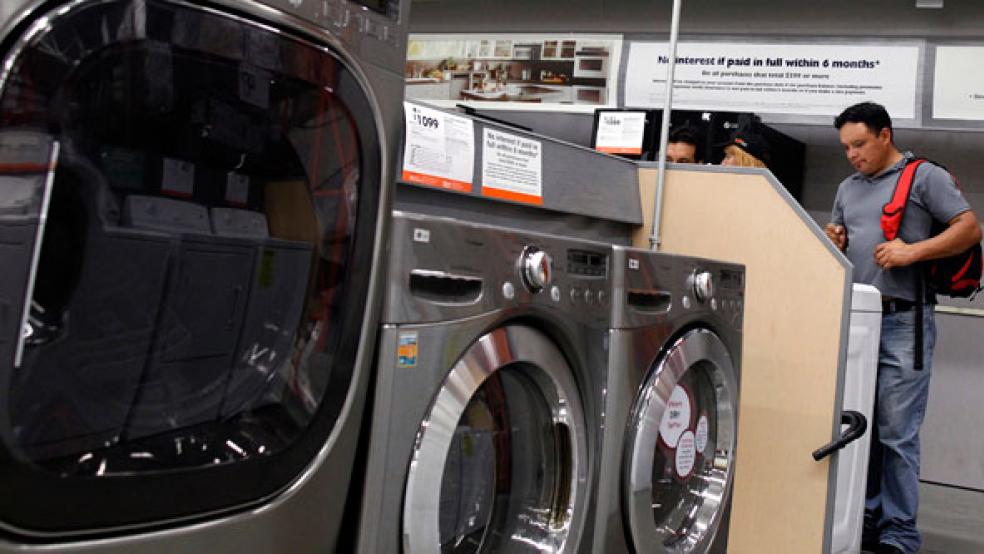A gauge of planned U.S. business spending increased by the most in just over a year in January, a sign businesses were becoming more confident in the durability of the economic recovery.

The case for the economy’s resilience was bolstered by another report on Wednesday showing that contracts to buy previously owned homes approached a near three-year high last month. Housing is expected to underpin growth this year.
Non-defense capital goods orders excluding aircraft, a closely watched proxy for business spending plans, jumped 6.3 percent, the biggest gain since December 2011. Orders for the so-called core capital had slipped 0.3 percent in December.
"The strong gains in core capital goods orders suggest that business investment activity, which has been one of the sour points of this economic recovery, could provide a meaningful lift to overall economic activity this quarter," said Millan Mulraine, a senior economist at TD Securities in New York. Economists had expected core capital goods orders to only rise 0.2 percent. Business spending regained its footing in the fourth quarter after contracting in the prior period.
In a separate report, the National Association of Realtors said its pending home sales index increased 4.5 percent to its highest level since April 2010 – just before the expiration of the home-buyer tax credit. The rise in signed contracts, which become sales after a month or two, added to data such as building permits and home prices that have suggested a decisive turnaround in the housing market. The sector is no longer a drag on the economy and home building added to economic growth last year for the first time since 2005.
Still, the reports are unlikely to change the Federal Reserve’s very easy monetary policy stance. Stocks on Wall Street were trading higher on the data. Prices for U.S. government debt were mixed, while the dollar was weak against a basket of currencies.
FACTORY ACTIVITY COOLING
The Commerce Department report also showed durable goods orders excluding transportation increased 1.9 percent last month, the largest gain since December 2011, after increasing 1 percent in December. That was well above economists’ expectations for a 0.2 percent increase.
However, overall orders for durable goods – items from toasters to aircraft that are meant to last at least three years – tumbled 5.2 percent as demand for civilian and defense aircraft fell sharply. Last month’s drop was the first since August.
Factory activity has cooled in recent months after helping to lift the economy from the 2007-09 recession. Sluggish domestic demand, tighter fiscal policy and slowing global growth are holding back manufacturing. Last month, shipments of non-defense capital goods orders excluding aircraft, used to calculate equipment and software spending in the gross domestic product report, fell 1 percent after being flat the prior month.
Overall orders for durable goods were dampened by a 19.8 percent drop in transportation equipment as demand for civilian aircraft dived 34 percent. Boeing received orders for only 2 aircraft, down from 183 in December, according to information posted on the plane maker’s website. The decline in orders is probably not related to the grounding of Boeing’s 787 Dreamliners after problems with overheating batteries.
Aircraft orders are very volatile and typically tend to fall at the start of the year.
"I haven’t heard any reports about airlines canceling their orders. This could be one-month lull rather than something greater," said Stephen Stanley, chief economist at Pierpont Securities in Stamford, Connecticut.
Defense aircraft orders collapsed 63.8 percent after soaring 58.5 percent in December, likely as orders were pushed forward ahead of $85 billion in government-wide spending cuts. The cuts, which are part of a plan to reduce the budget deficit, are set to kick in on Friday, unless Congress and the Obama administration come up with a last minute deal. Defense will bear much of the cuts.
Fed Chairman Ben Bernanke on Tuesday urged lawmakers to avoid the sharp spending cuts and warned they could combine with earlier tax hikes to create a "significant headwind" for the modest recovery. Defense capital goods orders plunged 69.5 percent in January, the sharpest fall since July 2000. Orders for motor vehicles were flat.
Orders for machinery recorded their largest increase since May 2010. There were also gains in orders for fabricated metal products, electrical equipment and appliances.




